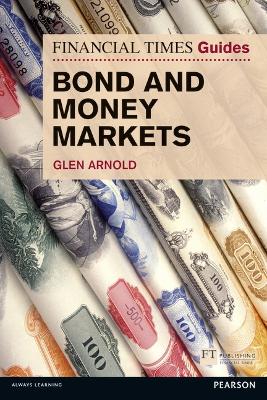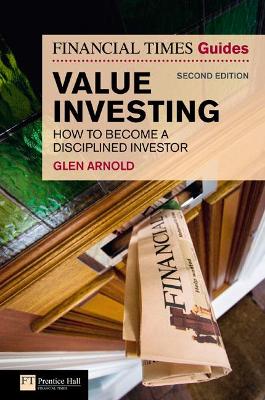The FT Guides
6 total works
This jargon-busting book describes how the bond and money markets work and how they impact on everyday life. It assumes no specialised prior knowledge of finance theory and provides an authoritative and comprehensive run-down of the workings of the modern financial system.
It’s in the money markets where money, or the value of money, can be bought and sold. It’s the place where Treasury bills, deposits, repurchase agreements, short-lived mortgages etc, can be traded. These are crucial to the global economy because they provide liquidity funding for the global financial system.
Bond markets operate in the same way but are financial markets where participants can issue new debt or buy and sell existing debt – known as bonds. As with money markets, bond markets are key because they provide money where no money previously existed (think of your mortgage).
Using real world examples from media such as the Financial Times, bestselling author Glen Arnold gives an international perspective on these markets.
- Understand key bond and money market terms and banking products
- Explore the wide variety of types of markets and their functions eg. LIBOR, gilts, government debt
- Gain insight into the main factors influencing prices in the financial markets
- Learn how fluctuations in the money markets can affect you and your own money strategies
The Financial Times Guide to Banking is a comprehensive introduction to how banks and banking works. Best-selling author Glen Arnold provides you with a foundation for understanding the wide variety of activities undertaken by banks. He shows you why these global institutions are so important to consumers and finance professionals alike and explains how their activities impact on everyday life.
The Financial Times Guide to Banking will give you:
- A thorough understanding of all types of banking from retail through to asset management and investment banking.
- An overview of global banking including the worldwide evolution of the sector, the influence of cross-border money flows and the importance of modern banking to international development
- Expert knowledge about instruments and markets including debt markets, futures markets and swaps and options
- Insight into the crucial importance of central banking and government regulation
- Answers to the big questions about monetary policy and interest rates, payment systems and banking success
From bestselling author Glen Arnold, this is a jargon-busting book that describes how financial markets work, where they are located and how they impact on everyday life. It assumes no specialised prior knowledge of finance theory and provides an authoritative and comprehensive run-down of the workings of the modern financial system.
Using real world examples from media such as the Financial Times, Arnold gives an international perspective on the financial markets with frequent comparisons in the workings of major financial centres such as the Bank of England and the City, the Federal Reserve System and Wall Street, the Japanese Central Bank, the European Central Bank and IMF and World Bank.
David Shapiro, Stamford Associates
'An excellent intorduction to value investing, some of its most famous practitioners and the investments that made them rich.'
Mark Wallace, Rothschild
'In an age of turbulence, reading this book is as good as an inoculation against fads and infatuation with over-trading.'
Robin Woodbine Parish, Chairman of the El Oro and Exploration company.plc
What are the key principles that have served great investors for over half a century?
Is there anything that we can learn from those investors who have displayed an enviable performance on the world’s stock markets?
In this groundbreaking book, bestselling author Glen Arnold addresses just these questions. He provides a set of guidelines which join value principles and growth attributes with the philosophies of the world's most famous investors.
Originally published as Valuegrowth Investing, this new edition has been updated throughout. The Financial Times Guide to Value Investing conveys fundamental concepts, provides practical methods and soffers sound reasoning to guide investment selections.
The Financial Times Guide to Value Investing:
Describes the proven investing philosophies of iconic investors including Warren Buffett, Peter Lynch and Benjamin Graham
Shows what ordinary investors should focus on when looking to invest
Provides tools for analysing key investment factors
Delivers a coherent investment strategy today for growth tomorrow
Proves that great investing requires great principles
Martin White, Chair of UK Shareholders Association
This is one of those great big books to buy and then tuck away for constant reference. It's a tour through everything from managing a portfolio to establishing a fair intrinsic value for a share. If it moves in the world of investing, it's probably here.'
David Stevenson, 'Adventurous Investor' in the Financial Times
'Informative and easy to read, Glen Arnold has produced arguably the most comprehensive book there is today on stock market investing and one that unquestionably will give an edge to any retail investor. This is a must read for anyone serious about investing.'
Simon Thompson, Companies Editor, Investors Chronicle
AN UPDATED VERSION OF THE BESTSELLING INVESTING BOOK IN THE UK
The Financial Times Guide to Investing is the definitive introduction to the art of successful stock market investing by debunking the myth that investing is only for the wealthy.
Bestselling author Glen Arnold covers the basics of what investors do and why companies need them, through to the practicalities of buying and selling shares and how to make the most from your money. Learn how to understand different types of investment vehicles, pick the right companies and understand their accounts so you can compile and manage a sophisticated portfolio.
The fourth edition of this investing classic has been thoroughly updated and will give you everything you need to choose your shares with skill and confidence.
New for this edition:
Updated insights into the inner workings of stock markets, new accounting rules and dangers to watch out for when looking for investment gems
Recent Financial Times articles, and the latest statistics to illustrate and expand on case studies and examples
Detailed updates of changes to tax rules and rates



